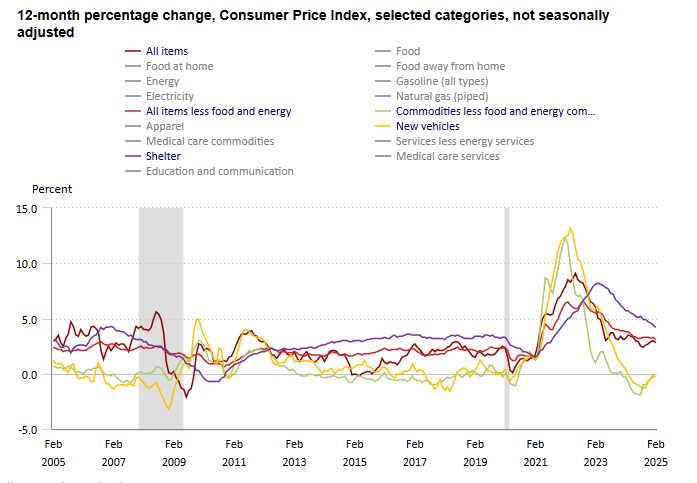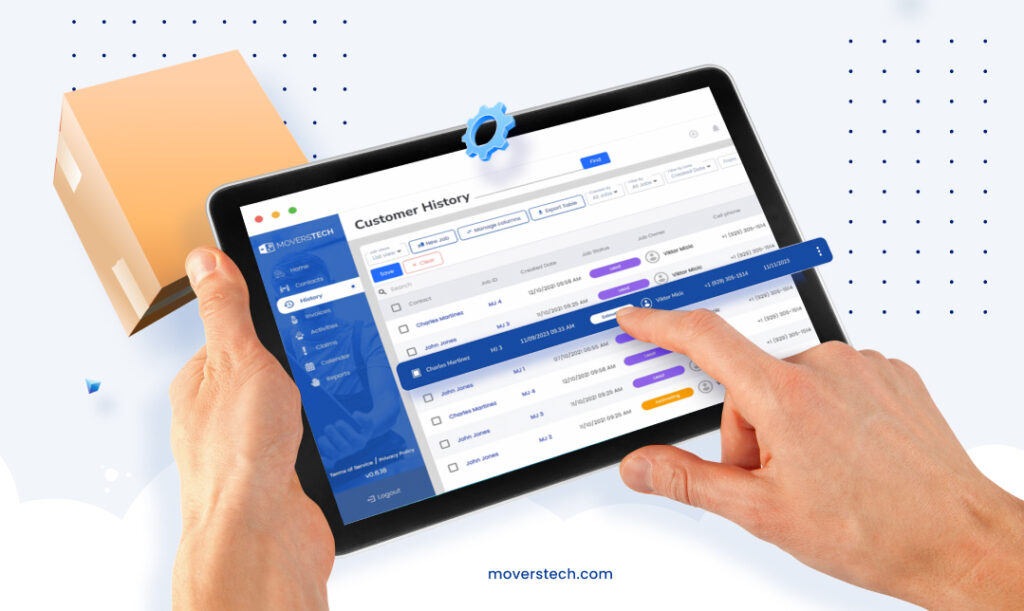The cost of running a moving business isn’t what it was a year ago—and it’s not slowing down. Inflation is hitting hard, making fuel, labor, and materials more expensive than ever. For moving companies, these rising costs can quickly eat into profits and strain operations. We at MoversTech CRM will tell you about the impact of inflation on moving costs and what you can do adapt and keep your business moving forward.
What is the impact of inflation on moving costs?
Inflation happens when prices across the economy rise over time. They reduce the purchasing power of money. Simply put, everything costs more, and businesses feel the pressure to adjust. In recent years, inflation has climbed due to supply chain issues, labor shortages, and increased demand in various industries. All this greatly influences moving trends in 2025. Here are the instances of the impact of inflation on moving costs:
- Rising fuel prices and transportation costs
- Higher labor costs and wage increases
- Increased equipment, truck rentals, and maintenance costs
- Moving insurance and claims

Rising fuel prices and transportation costs
Fuel prices have a direct and immediate impact on your moving business. Every truck, every mile, and every move depends on fuel. This makes price fluctuations a major concern. When gas and diesel prices rise, transportation costs quickly eat into profits. To manage rising fuel costs, consider these strategies:
- Optimize routes. Use route-planning software to reduce mileage and avoid traffic. Shorter, more efficient routes are great ways to improve profit margins as they save fuel and time.
- Invest in fuel-efficient vehicles. Modern trucks with better fuel economy can lower your overall fuel usage. While the upfront cost is higher, the long-term savings can make it worthwhile.
- Monitor fuel usage. This is a great tip on managing the impact of inflation on moving costs. Track fuel consumption across your fleet. Identifying inefficient vehicles or driving habits can help you make necessary changes.
- Negotiate fuel discounts. Partner with fuel providers or use fleet fuel cards to secure lower pump prices.
Higher labor costs and wage increases
Inflation increases the cost of living, leading employees to demand higher wages and better benefits to keep up. For moving companies, this means adjusting salaries to stay competitive in a labor market where workers have more options. Without offering fair pay, businesses risk losing skilled staff to competitors who provide better compensation packages.
Recent data highlights the ongoing challenge. The January 2025 report by U.S. Bureau of Labor Statistics (BLS) shows that median weekly earnings in the U.S. rose by 4.1% in the fourth quarter of 2024 compared to the same period in 2023. This trend underscores the rising labor costs that businesses must address to remain competitive and sustainable.
To manage these increased expenses effectively, you should focus on optimizing the workforce. Using workforce management tools can help streamline employee scheduling, minimizing inefficiencies and overtime. Automation tools, like dispatching and routing software, can reduce workloads and improve overall efficiency, allowing your team to accomplish more in less time.
In addition to wages, offering attractive non-monetary benefits can help retain employees. Flexible schedules, training programs, or performance-based bonuses can keep staff motivated without significantly increasing payroll costs. Retaining experienced employees is also a smart way to control labor costs, as high turnover leads to additional expenses for hiring and training.
Increased equipment, truck rentals, and maintenance costs
The costs of truck rentals, vehicle purchases, and maintenance are also examples of the impact of inflation on moving costs. Truck rental rates have risen due to increased demand and higher operating expenses for rental companies, such as fuel and insurance. The cost of purchasing vehicles has also soared, driven by rising production costs and supply chain disruptions. Even maintenance expenses have increased, with parts and labor becoming more expensive.
The effects don’t stop with vehicles. Packing supplies like boxes, tape, and padding have increased prices due to higher raw material and transportation costs. Equipment such as dollies, straps, and storage solutions are also more expensive.
To manage these challenges, you can adopt cost-saving strategies. Buying used trucks or equipment in good condition can save significant money compared to purchasing new. Regular maintenance of your vehicles and equipment helps prevent costly breakdowns and extends their lifespan. Negotiating contracts with suppliers to secure better pricing for packing materials and other essentials is another way to control expenses.
Moving insurance and claims
Inflation increases the cost of replacing or repairing lost or damaged goods, which drives up the value of insurance claims. For you, this means higher payouts on claims, especially for valuable items like electronics, furniture, and specialty items. Insurance providers adjust their premiums to cover these rising costs, leaving moving businesses with increased expenses for liability and cargo insurance.
To address this challenge, you can adopt proactive measures. Improving claims tracking helps you monitor patterns and address recurring issues, reducing the likelihood of costly claims. Implementing risk reduction strategies, such as better packing procedures, proper handling training for staff, and investing in protective equipment, minimizes the chances of damage during moves.
It’s also essential to educate customers about valuation protection. By offering clear explanations of coverage options, you can encourage customers to invest in higher levels of protection for their belongings. This will reduce disputes and out-of-pocket costs for your business in case of claims.
Strategies to offset the impact of inflation on moving costs
To lower the impact of inflation on moving costs, you need to focus on reducing costs and improving efficiency. Optimizing business operations is a key step. This means identifying and eliminating waste, automating repetitive tasks, and using tools to streamline scheduling. You can lower operating expenses and maintain profitability by ensuring that your resources are used effectively.
Investing in moving-specific CRM software, such as MoversTech CRM, can also help. These tools enable businesses to manage leads, automate customer follow-ups, track fuel usage, and schedule crews more efficiently. By improving organization and reducing manual work, you can save time and cut costs in multiple areas of your operations.

Another important strategy is to adjust pricing transparently. Clearly communicate with customers about why your prices are increasing. Emphasize the impact of inflation on fuel, labor, and supplies. At the same time, it must maintain competitive pricing to retain its market share.
Lastly, stay informed about economic trends. Regularly monitoring inflation rates and learn about housing market in 2025. Being proactive instead of reactive can make all the difference in navigating rising costs.
Take action to protect your profits now
The impact of inflation on moving costs is huge. It presents many challenges. However, you can adapt and stay profitable with the right strategies. Rising costs don’t have to derail your business if you take proactive steps to manage expenses and improve efficiency. Investing in technology, such as moving-specific CRM software, streamlining your operations, and closely monitoring your costs will help you stay ahead. Stay proactive, and your business can thrive even in the face of economic challenges.

